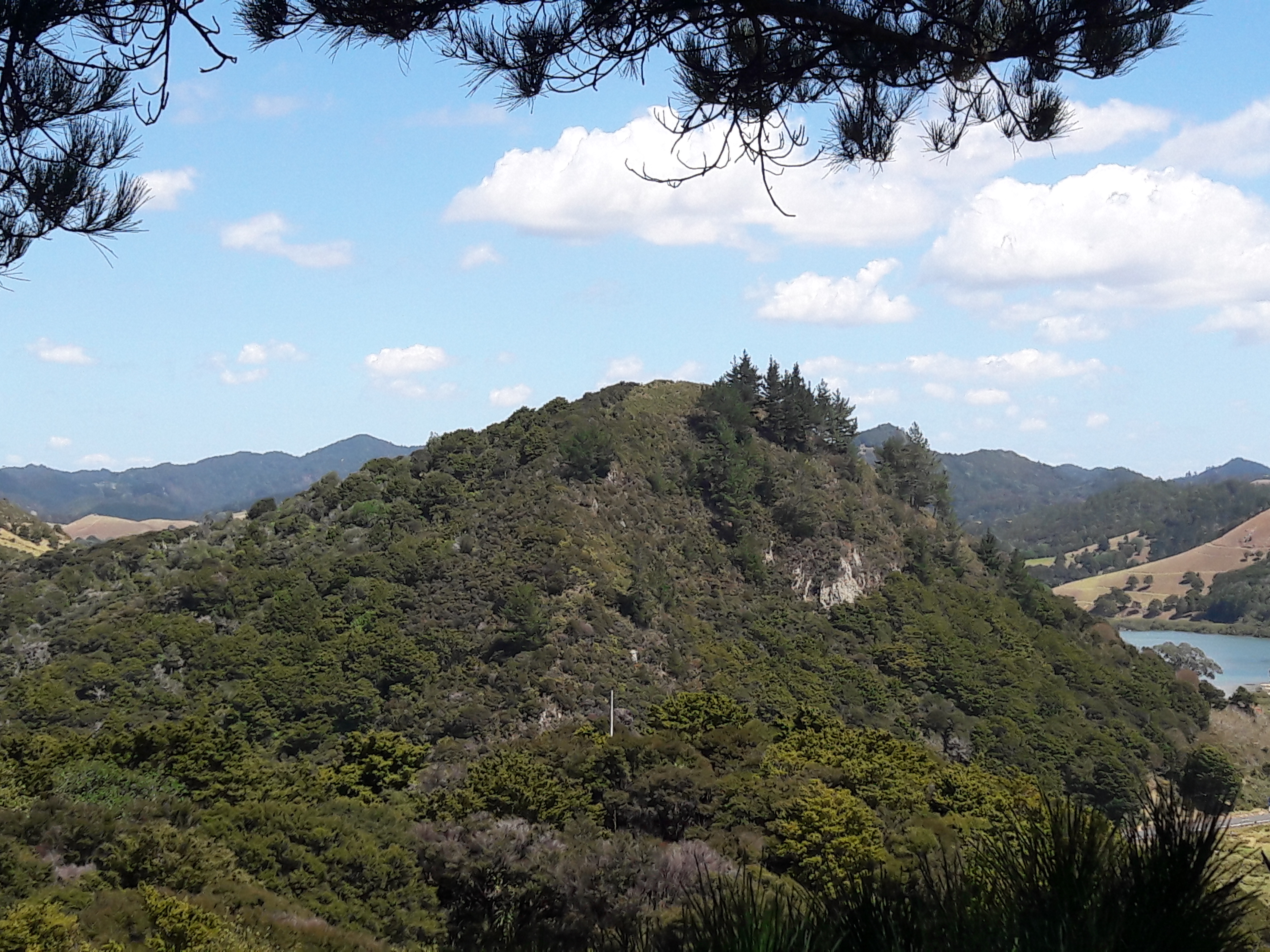Story
Wilding-pine blitz in Pataua South inspires iwi to upskill
Removing more than 1000 wilding pines from a Pataua South hill in just four days inspired several Ngātiwai kaimahi (workers) to undertake training so they can tackle larger wilding pine projects around Whangārei Heads.
Te Puke Tu Tai, also known as the Dudai, sits at the eastern end of Pataua South’s Frogtown Beach. Over four days in January, five Ngātiwai kaimahi and project coordinator Mike Urlich removed the trees to prevent further spread in this popular holiday area.
Northland Regional Council (NRC), Ngātiwai and Weed Action Whangārei Heads are collaborating to remove invasive wilding pines, which compete with native species and disrupt fragile ecosystems. They can also be dangerous when hanging over roads, paths and recreational areas.
Te Puke Tu Tai is a former plantation site, and trees of various ages continued to grow after harvest two summers ago. Te Kaurinui Parata, one of the Ngātiwai kaimahi, has been working with the organisations since mid-2019, and says four of the kaimahi are now doing Growsafe (agrichemical) and chainsaw training thanks to Weed Action Whangārei Heads.
“It will enhance their opportunities for future work. Doing that training added another string to my bow, and it’s also a great motivation to have the funding to pay for the time we were committing.”
Many seedlings were small enough to be removed using hand tools, and other trees were 1-2m in diameter, he says. The crew also pulled out weed plants such as tobacco and pampas.
“We made an impact. Further down the hill, there were a whole lot of native trees coming up, but they were being smothered. It was cool to think we made space for those young trees, ones like puriri and karaka, as part of reforestation,” Mr Parata says.
“It’s always been an aspiration of mana whenua and Māori to have healthy forests and maintain a nice korowai of flora on the whenua.”
The crew went on to tackle well-established pines on nearby Maukoro Maunga, a former pā site, and is now working at other sites around Whangārei Heads.
This wilding pine work is one of a growing number of projects funded by the Ministry for Primary Industries’ National Wilding Conifer Control Programme community partnership fund. Councillor Amy Macdonald, who represents NRC’s Coastal Central constituency, says the work at Pataua South is part of a collective vision to restore the native ecosystem in Whangārei Heads.
“NRC, iwi, landcare groups, community groups and many others are tackling plant and animal pests to protect and enhance local biodiversity,” she says.
“Nearly 10,000ha of Whangārei Heads is designated as a High Value Area, for its unique landforms and ecological strongholds. Kiwi, bellbird, kākā, pāteke and other native birds already live here, and we want to protect the environments they thrive in.”
Councillor Macdonald adds that wilding pines are a well-known fire hazard. There was a fire at Pataua South on December 31, 2020, in scrub behind the Treasure Island camping ground, which was full of people on holiday.
“Wilding conifers are prolific, and greatly increase the amount of fuel available to burn in a blaze. That scrub fire could’ve caused much greater damage, and put lives and homes at risk, if the pines were bigger and the fire had spread the short distance to Te Puke Tu Tai,” she says.
“Dealing with wilding pines now will save a lot of time and money in the long run.”
Find out more about wilding conifer control, and what to do about wilding pines in a vulnerable habitat: www.nrc.govt.nz/wildingconifers

Maukoro Maunga, a former pā site in Pataua South where iwi workers have been eradicating wilding pines.
